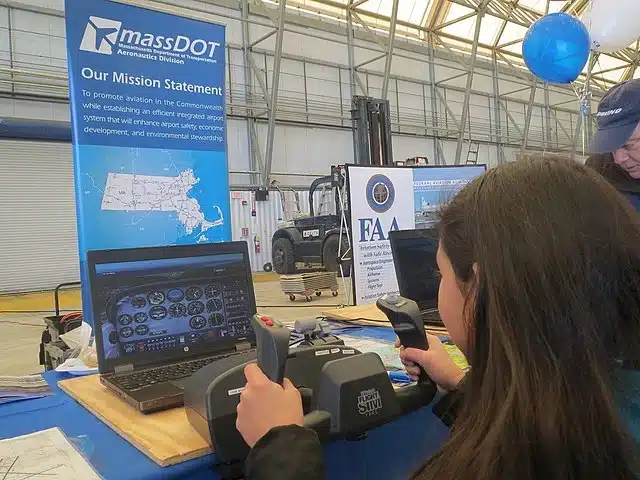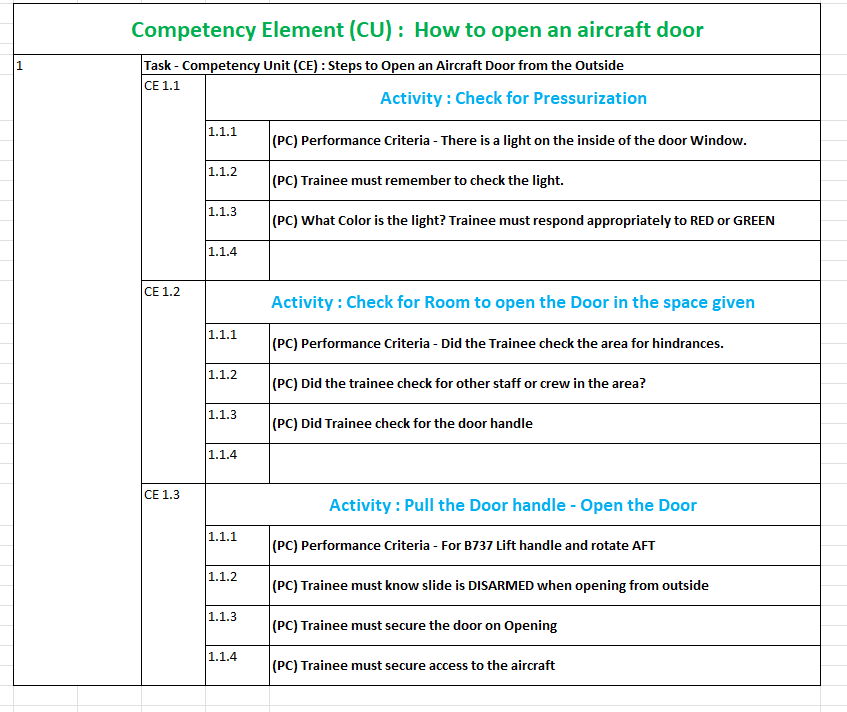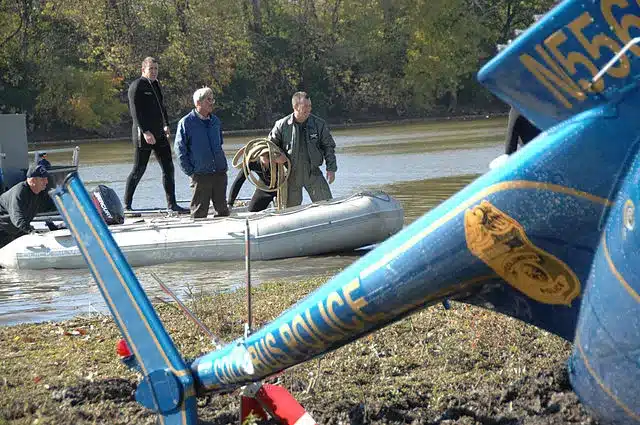Exploring AQP: Safer Performance-Based Training
Recent FAA rule proposals on pilot training for eVTOL aircraft prompted us to revisit the Advanced Qualification Program (AQP) subject. Today, we have Competency and Evidence-based training, but the forerunner was AQP. It is the FAA’s way to try to help Airlines and other Certificate Holders (MRO’s, Training Organizations) to build better training around their specific fleet, or capabilities and staff.
And we think it still has a big part to play.
Put simply, regulations are hard to decipher and turn into training syllabus. While the FAA’s primary role is to oversee compliance with the regulations, they understand the need to help those of us who don’t keep the CFRs on our bedside tables.
If you only have a minute
- Advanced Qualification Programs allows FAA Regulated Entities to move to Performance-based training. Similar to what ICAO and IATA are doing with CBTA and EBT training.
- AQP & CBTA training allows more training devices and approach options. Focusing on competency and assessing skills, not just knowledge.
- Advanced Qualification Programs encourage Innovation and Technology that support the transfer of skills to trainees. Such as AR/VR and Simulators.
- AQP will create Data-informed / Data-Driven training. With feedback loops that act as continuous improvement devices.
Now if you go with AQP, your solution must be demonstrated to be better (or as safe, if not safer) than the traditional requirement. The FAA’s recent SFAR on powered-lift aircraft is a great reason why AQP needs to be reinvigorated. Flight Operations Personnel roles are changing rapidly. Design your training correctly from the get-go will save you a lot of cost down the road.

What is the Advanced Qualification Program (AQP)?
The Advanced Qualification Program (AQP) is a training initiative designed to continuously improve the safety, reliability, and quality of air transportation services. Designed and Promoted by the Federal Aviation Administration, the goal of AQP is to streamline the certification process for Pilots, Flight Attendants, Aircraft Maintenance Technicians, and operations personnel.
By using a performance-based approach that focuses on demonstrating skills and abilities, rather than simply checking knowledge, training can be improved. ICAO and IATA have similar approaches with their CBTA and EBT curriculum outline approaches.
Objectives - AQP and EBT
CBTA (Competency Based Training and Assessment) and EBT (Evidence Based Training) are the new gold standard. We have a who article on these in the Future of Training. Why? Simple – Show Don’t Tell. And by by Show, we don’t mean the Instructor shows, not tells. Then the TRAINEE shows. And the Trainer/Instructor scores that action against a pre-defined referenced
Simple, right?
Not so simple. Especially now that all training is moving towards performance-based standards. It means that a lot of training syllabi needs to be redesigned based on moving from topics and sub-topics, to competency elements and performance criteria. And scores. A few years ago an FAA or EASA auditor would ask for test papers with the checked boxes. No more.
In the future, they’ll ask to see evidence of how a trainee performed a task or exhibited a skill under the watchful eye of a IA (Instructor/Assessor).

pilotinstitute
Are You Ready To Take Off?
Pass the FAA Private Pilot test with flying colors. Achieve your dreams of flying an airplane.
Why was AQP Developed and Implemented?
Human error. It was, is and probably will be the primary cause of incidents and accidents in our industry. Thankfully they are extremely rare in Commercial Aviation, but as we transition to eVTOLS, new fuels and energy propulsion such as electric aircraft and hydrogen power, we cannot expect to maintain these levels of safety. Statistics, validation and verification just won’t allow it.
Actions - Not words
In order to meet these new emerging technologies and vehicles (especially vertical take-off and landing aircraft that have the flight phases of rotor craft and fixed wing aircraft), our training methods need to be as flexible as the pilots. AQP started in the US military where new aircraft, new tech and training changes were the norm. So we know it works.
Which Groups fall under AQP training?
Anyone who’s role falls under Operational Control or has flight safety implications. Pilots, as the operators of the aircraft would be the prime example. Therefore any amendments to their training regime must have similar or better safety outcomes. Here’s the full list.
Pilots
Fight attendants
Aircraft Dispatchers
Operations Personnel
Check Airman License Holders
Aircraft Maintenance Staff
Maintenance staff performing certification activities
The Main Principles of AQP
AQP training is a voluntary program and can be started or terminated by the regulator (FAA) or the Certified Organization. And just like CBTA and EBT, a systems design approach must be applied. AQP training demands that;
- The Training design be analyzed fully – by certified trainers
- The modules are broken into CU’s (Compliance Units) and PCs (Performance Criteria) similar to CBTA.
- Training is under a Continuous Improvement (CI) program with the QA/QM team
- Training is Implemented correctly.
- Evaluated – there is data-based Assessment for both the trainees AND the training itself.
Below is a piece of training content that show how the CU/PC elements work together. You can see how a good observation program oversees the learning process. For this “door opening” training you can imagine how errors could be made in live training and the corrective action being implemented by the instructor. The training could then be updated to cover points that reoccur, delivering better crew proficiency

Crew Resource Management (CRM)
CRM has been around for decades. Brought in during the early period of aviation when most pilots came from a military background. Back then, young first officers would not dare correct or question the actions or decisions of a superior. Even when they knew a decision was incorrect and threatened the safety of all on board.
CRM was brought in for critical tasks to ensure that checks and double-checks were being done and the crew worked as a team. CRM training is also applied to Aircraft Dispatchers under FAA regulations, as flight planning is jointly responsible. AQP works best in these scenario based tasks.
Evaluation
Today, flight operations are at their safest because of developments like AQP. But the world moves on, and technology changes. Cockpits are now simpler and systems integration helps pilots with workload and ease of reference. New simulators and teaching methods are being developed and in order to assess and validate these levels of safety, we need systems like AQP to validate them.
When do we use the AQP Approach?
AQP is mainly for Pilot assessment. Their job skills and therefore their training, is well-suited to the binary assessment methods of the Advanced Qualification program. Flight Attendants and Dispatchers are harder to assess due to the fact that a lot of their roles are team-based decision making versus individual actions of flying and flying/monitoring.
AQP is very much a USA/FAA standard. It appears now in other jurisdictions as CBTA and EBT, especially in the UK and EASA. But the fundamental are the same.
A fundamental reason to believe in AQP is variation. United Airlines B777 pilots and an Alaskan sightseeing Part 121 Operator using seaplanes are not the same operator. Regulations try to accommodate everyone, but its impossible. Now imagine a new airline start-up using the Eviation Alice all-electric aircraft flying from McCarron to the MGM Grand Hotel. We need to design training, but they want to incorporate new simulator technology. That’s a challenge for them and the FAA oversight office.

AQP Instructor-Evaluator (I/E)
Training is down to the Training Department and Trainers. But we need to upgrade the Trainer title. It needs to be Trainer-Evaluator. If you are a Trainer – reading this – then there’s a 95% chance your last lesson was delivered in a classroom with a presentation followed by multiple choice questions. Maybe with some group discussion.
That can work for some topics. Human Factors being one. Understanding topics such as fatigue, decision-making or similar content of training would work in these scenarios. But training where evaluation requirements need to be observed, or an evaluation of performance needs to be recorded, then AQP is needed. Especially when using novel training methods or devices.
Curriculum
AQP is a systematic methodology to test the proficiency in knowledge but mostly ACTION. An instructor’s job is to teach, show and observe. Some are better than others. Some are instinctively able to know when someone is struggling with a concept or a task and spend more time to assist. AQP and CBTA takes out the guesswork and builds clarity for the Instructor as Evaluator.
AQP Regulations
AQP was introduced in 1990 under SFAR 58 special FAA AQP Rule. Published in 2005 as 14 CFR Part 121 Subpart Y as another means of regulatory compliance for certificate holders. Regulatory requirements are great. They are built from experiences and many years of work by industry experts. They are designed to maintain safe operations and ensure operational knowledge passes to the trainees. Where regulations sometimes fail us is in their implementation and the FAA’s ability to let us satisfy the CFRs in new, or better, ways.

TRAKRACER
Hone your aviation skills with these great flight simulator products from TrakRacer.
Get yourself in the sky today and feel what it’s like to be a pilot!
AQP Methodology
The FAA AQP Training System categories are almost identical to CBTA and EBT methodologies. We would even argue that they should be amalgamated in the future by the FAA and EASA.
- Management of Documents – The Training Manuals
- Training Program Scope is declared and described
- Instructional System Design (ISD) is used
- An Implementation and Operations (I&O) Plan is created.
- Curriculum Outline Documents
- Job Task Analysis (JTA)
- Qualification Standards (Competency Elements & Performance Criteria)
- Evaluation Strategy (Trainee expectation)
- Training System Data and Reporting Documents
- Data Collection Tables
- Periodic review of Training data
- Annual Reports to the Board
- Approval of Training Equipment
- Training facility / Training Device / Training Software (fit-for-purpose)
- Evaluation activities (Live/VR/AR/remote)
- Evaluation of individual
Training Providers should also be doing this level of design and implementation in their training. If you have a 3rd party training organization delivering training under your Part 121 or part 145 entity, you need to verify this. A a good example of a leader in this area would be CAE Rise. A titan of the training industry, the RISE system helps in the design and implementation of AQP/CBTA for pilots and flight attendants.
What is the Future of AQP Training In Aviation
This is our humble opinion only. It’s difficult in this new world of ChatGPT and Meta how training and assessment will develop. We are hopeful. Training is expensive, especially for pilots. B737Max and A320Neo simulators are more expensive to run than the actual aircraft. We need them to teach technical skills but to perform an evaluation of skills. We need new flight training devices for emerging technology such as eVTOL and all-electric aircraft with new energy systems.
Job skills
All aspects of operations personnel training needs to get better and get cheaper. Online training courses haven’t changed in decades and that’s a problem. Remote learning is ok for some subjects, not good for technical skills (compliance). Completion of training with innovative training programs is the goal of AQP, but only if they do better training. And we have the evidence and data to prove it.



